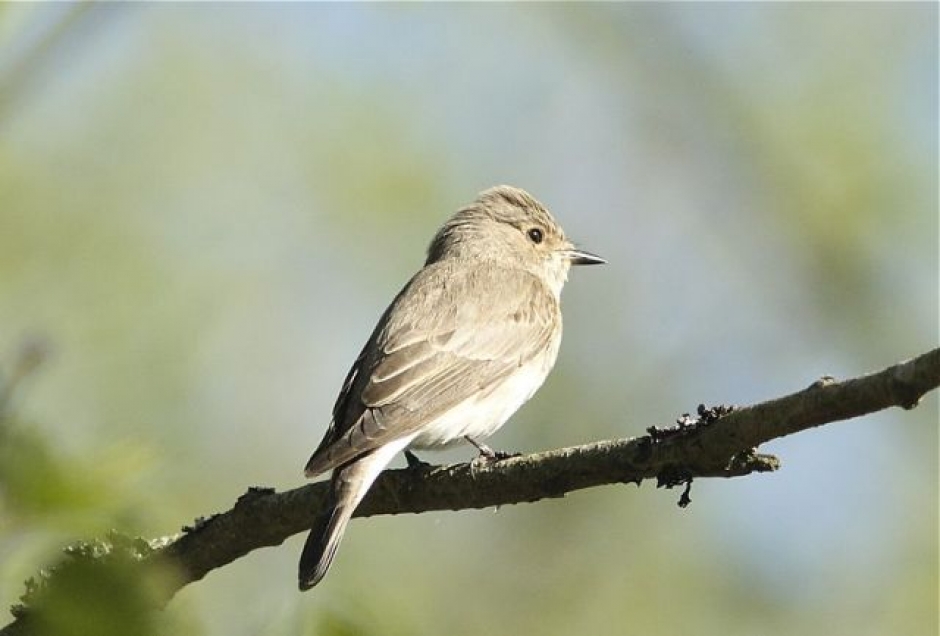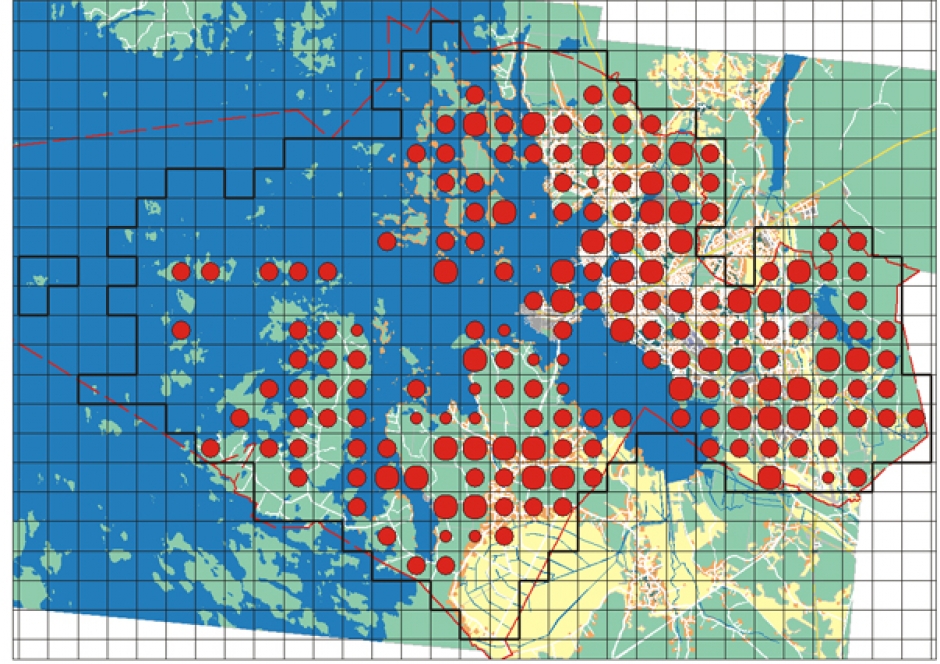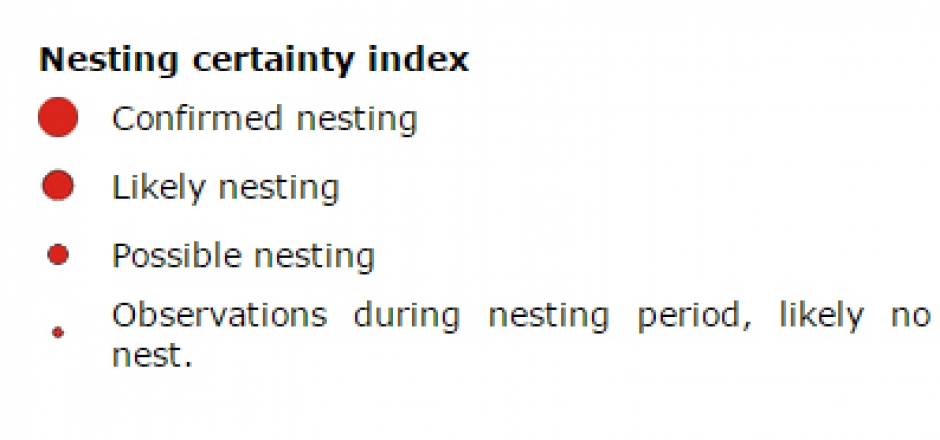Spotted flycatcher
Muscicapa striata

General information. The spotted flycatcher is a grayish brown passerine, undistinguishable from both call and plumage. The vast majority of spotted flycatchers return to the Vaasa region during the second half of May. Its call is a soft, squeaky chirrup and the species is most often spotted in conspicuous places, for example, perching on TV-antennae while scanning for insects.
A typical behavioral trait of this species is that the male and female search for, and compare, nesting sites together. The nest is then built in a half-open space, such as a cavity in a deciduous tree, rain gutter or similar structures on buildings. There have been numerous reports about spotted flycatchers nesting in, for example, a flower box on a balcony or on a feeding table.
A majority of the population lays their eggs at the beginning of June. However, some of the nests are destroyed as the eggs are laid and the birds are forced to build a new nest. In these cases, egg-laying takes place as late as July, which is why it is common to spot young even in August.
After nesting, the spotted flycatchers disappear during August and September as they migrate to Africa over the winter.
- Length 15 cm
- Nests in tree stumps, forks of branches or open nesting boxes and also in rain gutters and similar structures on buildings
- Migratory bird. Returns from southern Africa in the end of May
- Feeds on insects
Habitat. The spotted flycatcher thrives in many types of environments. It mainly nests in sunny edges of forests, forest clearings and close to areas with detached homes. It tends to avoid densely growing, old spruce forests and plantations.
Distribution in Vaasa. During the survey the spotted flycatcher was observed in approximately 170 survey blocks and has an even distribution across the Vaasa city area. The species is absent among the nesting birds of the outer archipelago and in vast farmlands such as Söderfjärden.


